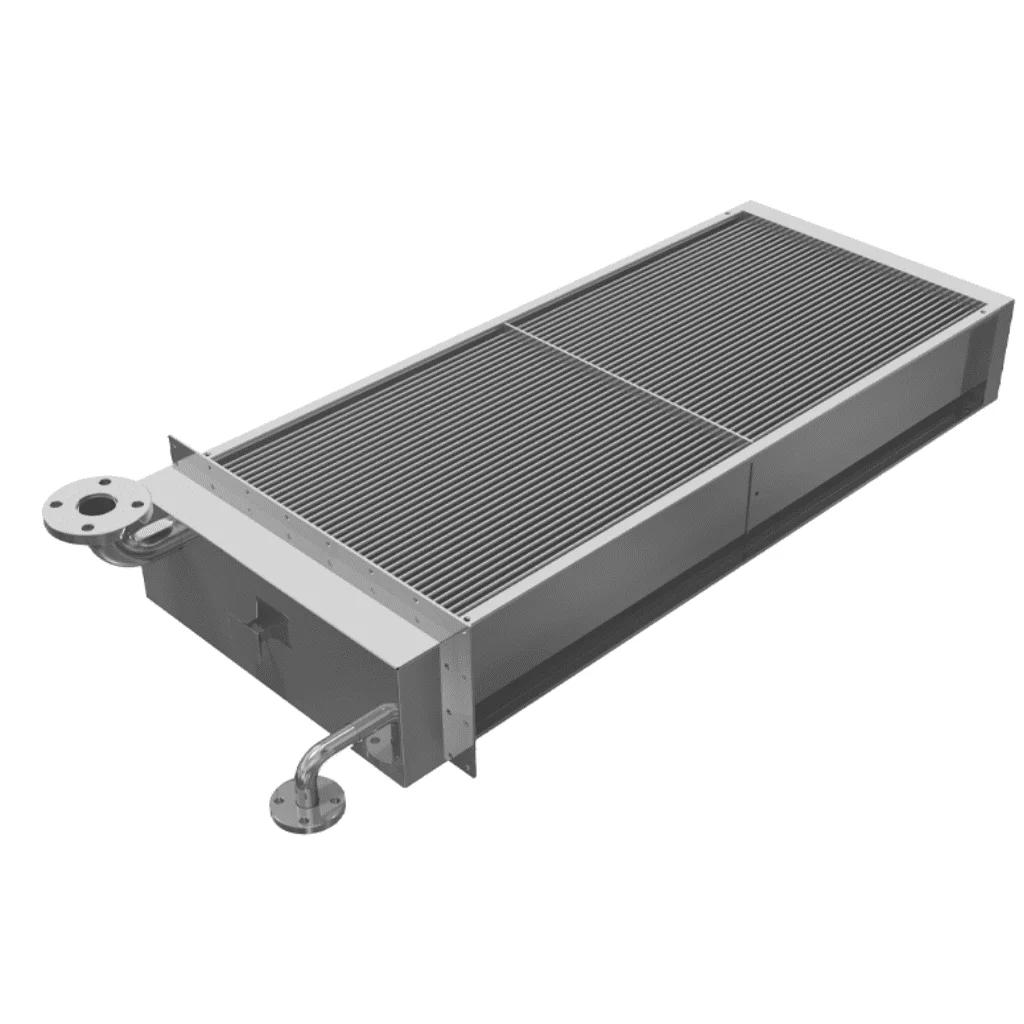FLAT TUBES HEAT EXCHANGER
The flat tubes heat exchanger offers an extraordinarily compact and efficient solution ideal for working in different installations, either as a gas-gas heat exchanger or as a gas-liquid heat exchanger.
Its differential characteristic is the fact of having flat tubes, with an oblong shape, which, compared to circular tube heat exchangers, reduce the back dead angle of the tubes. In this way we get an exchanger with more “aerodynamic” tubes, reducing the resistance to the passage of air, minimizing the air pressure drop and, therefore, reducing energy consumption.
If we observe the air flow with a thermal camera, we will see how a series of turbulences are generated at the back of the tubes which cause the heat transfer coefficient to decrease very slightly. The fact of having flatter tubes, with less height, allows us to minimize this dead angle and, therefore, the PS-Snake models allow us to improve the thermal exchange coefficient and the efficiency of the installations.
FLATTENED TUBES
PS-SNAKE
The flattened tube exchanger has oblong shaped tubes that give them a lower pressure drop, less dead angle and greater exchange performance than exchangers with circular tubes.
Applications: Energy, oil and gas, food and beverages, agriculture and greenhouses, chemical, heavy industry, naval, air conditioning, refrigeration, purification, transport and marine plants.
Warranty
Smart details
Design
Resistance
HEAT EXCHANGER COIL DETAILS
Settings
The heat exchanger coils that BOIXAC propose are designed in multiple formats, adapting to the needs of each project. From 950ºC to the production of ice crowns.
Strength and durability
The products are manufactured with noble and highly resistant materials, providing resistance and durability to installations, even those that work with high contamination factors and corrosive environments.
Productive precision
Productive precision allows us to be agile and punctual, always with sized solutions and quality products that are subjected to different tests such as pre & post production tightness.

